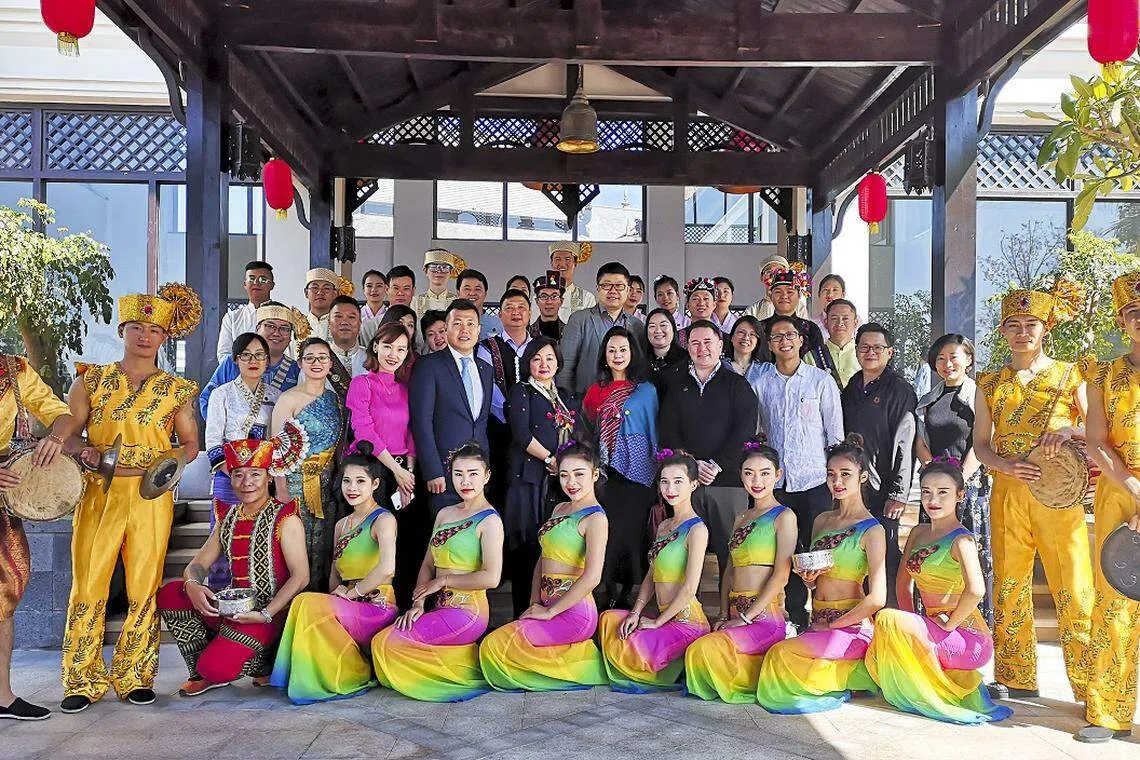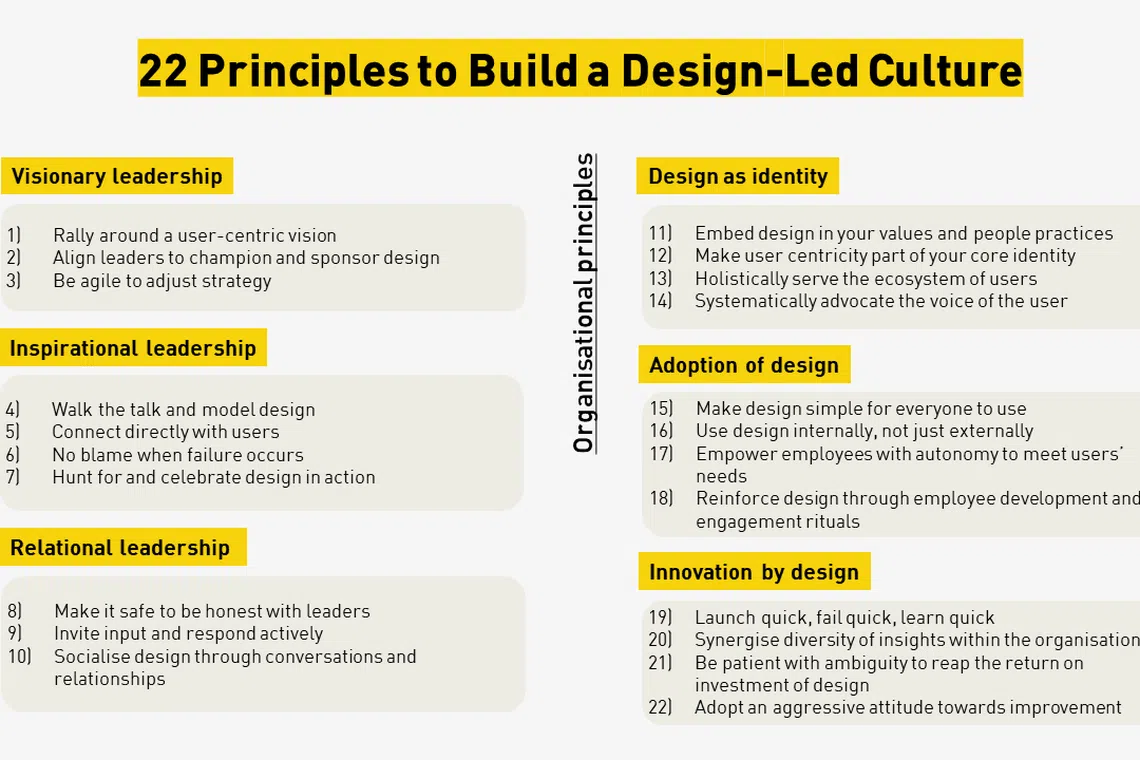How some large local businesses future-proof themselves amidst a global pandemic
Renowned local companies such as Banyan Tree Group and Changi Airport Group intentionally build strong organisational cultures that stand the test of time and produce lasting benefits
Many know it as a world-class brand in hospitality and services, managing close to 50 unique properties and more than 60 spas spanning the globe, from the Maldives to Marrakech. But one of the secrets to Banyan Tree Group's success lies in making staff well-being a top priority.
As part of its belief that authenticity is what sets its brand apart, Banyan Tree Group practices "using design internally, not just externally" in how it treats its staff. What that means is that the company regards them as important stakeholders to the business, and values their emotional, mental and physical health. This positive employee experience can then be reinforced in their external interactions with actual customers. For them, "Happy Associates = Happy Guests = Happy Shareholders".
In addition to employee satisfaction surveys, Banyan Tree Group uses a unique well-being index for which it poses lifestyle questions to staff members (referred to as associates) in areas such as sleep, physical vitality and dietary awareness. It uses the data obtained to determine each associate's overall well-being beyond how they feel about work and following this, to implement suitable initiatives and policies. Banyan Tree Group helps its associates stay healthy in mind and body. For example, it offers wellness-enhancing staff meals on property as well as services such as teletherapy, where associates can speak anonymously with a team of mental health experts.
The family behind the group has also adopted the design principle of "walking the talk and modelling design" for its employees.
The Founder and Executive Chairman, Mr Ho Kwon Ping, personally collects and shares anecdotes of associates who have displayed the organisation's values, making sure that these associates are publicly recognised. Ms Claire Chiang, Banyan Tree Group's Co-Founder and Senior Vice President, leads the curation and creation of learning resources tailored to meet associates' needs, even personally conducting training for some modules.

Banyan Tree Group also set up the X-Change, a platform which allows associates from various properties to share their ideas and new solutions, regardless of whether they have been implemented. This communicates that good practices are noticed and appreciated by the leadership team.
Navigate Asia in
a new global order
Get the insights delivered to your inbox.
But achieving this did not come without effort. "A key challenge in applying a design-led culture in a rapidly-changing environment is overcoming inertia and the resistance to change," says Ms Ho Ren Yung, Banyan Tree Group's Senior Vice President of Brand HQ. "Overcoming this is a combination of working at the individual, team and organisational level," she says, adding that it is critical that a company has "champions who can win others over and demonstrate the value of design thinking".
Banyan Tree Group is one of 10 companies featured as case studies in the newly released Design-Led Culture Study Playbook, titled "It's All About Culture: Better Businesses by Design", a collaboration between DesignSingapore Council (Dsg) and ROHEI Learning & Consulting.
The Playbook examines and studies the culture of design-led organisations and uncovers the key strategies, or "recipes for success", involved in developing it. Close to 50 in-depth interviews were conducted with senior management personnel from 27 diverse, design-led organisations, including family-run small and medium-sized enterprises, large local enterprises, international conglomerates and government agencies.
This culminated in 22 principles for building a design-led culture, which includes concrete steps organisations can take to implement them at work, regardless their industry or size. The Playbook also shares the success stories of companies to demonstrate the strong correlation between business success and having a design-led culture.
"The clear breakdown of these principles alongside case studies that give practical examples of how to implement them is a winning formula. The Playbook is insightful, inspirational and implementable," says Ms Ho.
Proactively creating a user-centric culture
Like Banyan Tree Group that did not rest on its laurels despite its success, Changi Airport Group (CAG) constantly strives to improve the passenger experience despite having achieved recognition as one of the world's best airports, and adopts the design principle of having "an aggressive attitude towards improvement".

"For us, luxury means that you had expected a certain standard, but the standard provided was way beyond what you expected," says Mr Jayson Goh, CAG's Managing Director of Airport Operations Management. Peppered throughout the airport are feedback stations for passengers to rate their satisfaction with the experiences at various touchpoints, such as check-in counters, sales counters and restrooms. These ratings are then relayed real-time to over 300 frontline staff. For example, a negative rating in a restroom because of a wet floor is instantly transmitted to a cleaning supervisor, who then dispatches cleaners to dry the floor - all within 15 minutes.
CAG also conducts research into the psychology of passengers, to uncover needs that may sometimes seem counter-intuitive. When it was designing Terminal 4, research showed that passengers would prefer to interact with a self-help kiosk rather than a person if there was a significant difference in speed and efficiency. This led to CAG's first fully automated - and highly successful - departure system.
When it comes to "making user centricity part of its core identity", CAG ensures that this principle is embraced by everyone in the organisation. The primary goal of user-centric companies is to add value to and improve the experience of all their users, putting their users' needs at the heart of everything they do.
Interestingly, this sometimes means that certain processes have to be sub-optimised in order to benefit the overall passenger experience.
For example, while it may seem desirable for passengers to clear immigration as quickly as possible, it would detract from the overall experience if they then end up having to wait a long time to collect their bags. As such, it might be better for the waiting time to be distributed, with less static waiting overall.

"Good communication is critical in changing mindsets toward design thinking and building a design-led culture, especially in an organisation as large and complex as ours," says Mr Daniel Loo, Senior Manager of People Team. To achieve this, CAG identified "Change Champions", in their workplace transformation project, to partner with its human resources department, known as the People Team. Over the course of the project, these Change Champions have played pivotal roles in conveying employee sentiment in design decisions.
Other notable CAG projects that demonstrated that design can be easily implemented internally include "Project Starship", a radical skills-exchange platform (built completely in-house) where project owners and employees across departments could connect and contribute their time and skills to solve challenges and propose new ideas. From the initial idea to conceptualisation, the team managed to launch the platform successfully in just over a month.
"The pandemic has hit the aviation sector hard but that has not stopped CAG from continuing to innovate and pivot into new areas to serve our customers, such as launching a new food delivery service (Changi Eats), grocery delivery service (Getit by Changi Recommends) and pivoting iShopChangi's business to target non-travellers, just to name a few," says Mr Loo. "Many of these are business ideas that arose from a design-led culture within CAG where employees are encouraged to think outside the box to better serve customers."
"It's All About Culture: Better Businesses by Design" examines the culture of design-led organisations and uncovers the key strategies involved in developing it. The Playbook outlines 22 principles for building a design-led culture, which are grouped into six broad categories.

Companies are encouraged to first complete the Design-Led Culture Survey (featured in the Playbook), to uncover their areas of strength and those they can improve on before reading more about the principles, recommendations and case studies to find out how they can better build a design-led culture.
Download the Design-Led Culture Study Playbook here.

Decoding Asia newsletter: your guide to navigating Asia in a new global order. Sign up here to get Decoding Asia newsletter. Delivered to your inbox. Free.
Copyright SPH Media. All rights reserved.

